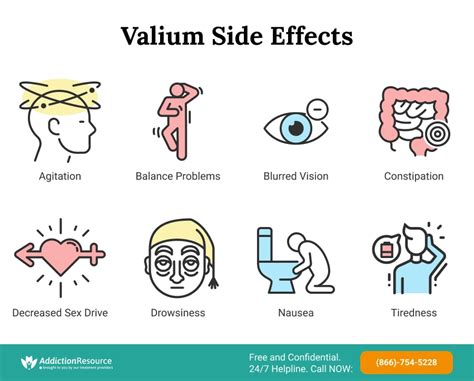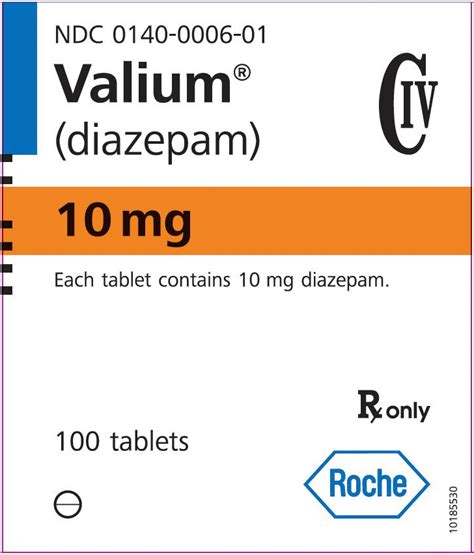Intro
Valium, also known by its generic name diazepam, is a medication that belongs to the benzodiazepine class. It has been widely used for its therapeutic effects, which include relieving anxiety, insomnia, and seizures. The importance of understanding Valium's uses and effects cannot be overstated, as it is a commonly prescribed medication that can have significant benefits when used properly, but also potential risks and side effects.
The history of Valium dates back to the 1960s, when it was first introduced as a safer alternative to barbiturates. Since then, it has become one of the most prescribed medications in the world, with millions of people using it to manage their anxiety, sleep disorders, and other conditions. However, the rise of Valium's popularity has also led to concerns about its potential for abuse and dependence. As a result, it is essential to approach the topic of Valium's uses and effects with caution and to carefully consider the benefits and risks associated with its use.
Valium's mechanisms of action are complex and involve the manipulation of neurotransmitters in the brain, particularly gamma-aminobutyric acid (GABA). By enhancing the effects of GABA, Valium can produce a calming effect on the nervous system, which can be beneficial for individuals experiencing anxiety, panic attacks, or insomnia. However, the long-term use of Valium can lead to tolerance, dependence, and withdrawal symptoms, which can be severe and even life-threatening. Therefore, it is crucial to use Valium only under the guidance of a qualified healthcare professional and to follow their instructions carefully.
What Is Valium Used For?

The benefits of using Valium for these conditions are numerous. For example, it can provide rapid relief from anxiety and panic attacks, improve sleep quality, and reduce the frequency and severity of seizures. However, it is essential to weigh these benefits against the potential risks and side effects, which can include drowsiness, dizziness, and confusion.
Types Of Conditions Treated With Valium
Some of the specific conditions that Valium is used to treat include: * Generalized anxiety disorder * Panic disorder * Insomnia * Seizures * Muscle spasms * Alcohol withdrawal * Restless leg syndromeIt is worth noting that Valium is not a cure for these conditions, but rather a treatment that can help manage symptoms. In addition, Valium is often used in combination with other medications or therapies, such as cognitive-behavioral therapy or physical therapy, to achieve optimal results.
How Does Valium Work?

The exact mechanisms of Valium's effects are complex and involve the manipulation of various neurotransmitters and receptors in the brain. However, the overall effect is to reduce the activity of the nervous system, which can be beneficial for individuals experiencing anxiety, panic attacks, or insomnia.
Valium's Effects On The Brain
Some of the specific effects of Valium on the brain include: * Increased levels of GABA * Decreased activity of nerve cells * Reduced anxiety and stress responses * Improved sleep quality * Reduced frequency and severity of seizuresIt is essential to note that Valium's effects can vary depending on the individual and the specific condition being treated. In addition, Valium can have potential side effects, such as drowsiness, dizziness, and confusion, which can be severe and even life-threatening in some cases.
Valium Side Effects

In rare cases, Valium can cause more severe side effects, such as:
- Allergic reactions
- Seizures
- Hallucinations
- Psychosis
- Dependence and withdrawal symptoms
It is crucial to report any side effects to a healthcare professional, as they can be a sign of a more serious condition. In addition, it is essential to follow the instructions of a healthcare professional carefully and to use Valium only as directed.
Managing Valium Side Effects
Some ways to manage Valium side effects include: * Taking the medication as directed * Starting with a low dose and gradually increasing as needed * Avoiding alcohol and other central nervous system depressants * Getting regular exercise and practicing stress-reducing techniques * Keeping a journal to track side effects and report them to a healthcare professionalIt is also essential to be aware of the potential risks of Valium, including dependence and withdrawal symptoms. By understanding these risks and taking steps to manage them, individuals can minimize the potential side effects of Valium and achieve optimal results.
Valium Dosage And Administration

It is essential to follow the instructions of a healthcare professional carefully and to use Valium only as directed. In addition, it is crucial to be aware of the potential risks of Valium, including dependence and withdrawal symptoms, and to take steps to manage them.
Valium Dosage Forms
Valium is available in a range of dosage forms, including: * Tablets * Oral solution * Rectal gel * InjectionEach dosage form has its own specific instructions for use, and it is essential to follow these instructions carefully to achieve optimal results.
Valium Interactions

These interactions can increase the risk of side effects, such as drowsiness, dizziness, and confusion. It is essential to report any medications or supplements to a healthcare professional, as they can interact with Valium and affect its efficacy and safety.
Managing Valium Interactions
Some ways to manage Valium interactions include: * Informing a healthcare professional about all medications and supplements * Avoiding central nervous system depressants and other interacting medications * Starting with a low dose and gradually increasing as needed * Monitoring for side effects and reporting them to a healthcare professionalBy being aware of the potential interactions of Valium and taking steps to manage them, individuals can minimize the risks and achieve optimal results.
Valium Abuse And Dependence

It is essential to seek help if Valium abuse or dependence is suspected, as it can have severe consequences, including overdose and death.
Managing Valium Abuse And Dependence
Some ways to manage Valium abuse and dependence include: * Seeking help from a healthcare professional or addiction specialist * Gradually tapering off the dose under medical supervision * Participating in counseling and therapy to address underlying issues * Joining a support group to connect with others who have experienced similar strugglesBy being aware of the potential risks of Valium abuse and dependence and taking steps to manage them, individuals can minimize the risks and achieve optimal results.
What is Valium used for?
+Valium is used to treat a variety of conditions, including anxiety disorders, insomnia, seizures, and muscle spasms.
How does Valium work?
+Valium works by enhancing the effects of GABA, a neurotransmitter that inhibits the activity of nerve cells in the brain.
What are the potential side effects of Valium?
+Valium can have a range of side effects, from mild to severe, including drowsiness, dizziness, confusion, and dependence.
Can Valium be abused and lead to dependence?
+Yes, Valium can be abused and lead to dependence, particularly when used for extended periods or in high doses.
How can I manage Valium side effects and interactions?
+By following the instructions of a healthcare professional carefully, reporting any side effects or interactions, and taking steps to manage them, such as starting with a low dose and gradually increasing as needed.
In summary, Valium is a medication that can be used to treat a variety of conditions, including anxiety disorders, insomnia, seizures, and muscle spasms. While it can be effective in managing symptoms, it is essential to be aware of the potential risks and side effects, including dependence and withdrawal symptoms. By understanding how Valium works, its potential side effects and interactions, and taking steps to manage them, individuals can minimize the risks and achieve optimal results. If you have any questions or concerns about Valium, please do not hesitate to comment or share this article with others who may be interested.
